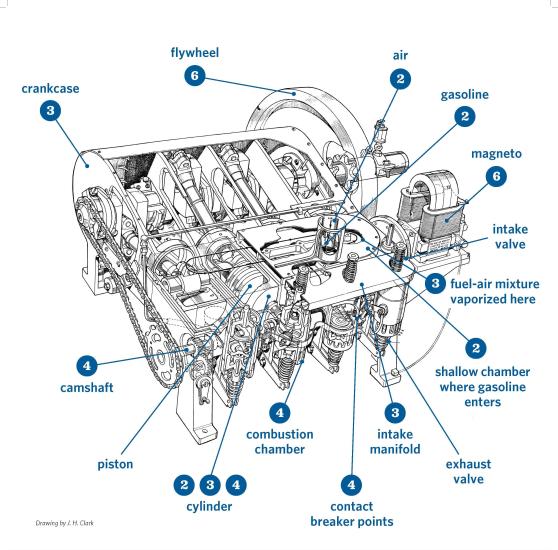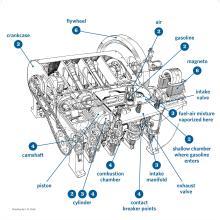-
This is a diagram of the 1903 Wright Flyer Engine. The engine had no fuel pump, carburetor, spark plugs, or throttle. Yet the simple motor produced 12 horsepower, well above the Wrights’ minimum requirement of 8 horsepower.
- Gasoline was gravity-fed from a small quart-and-a-half tank mounted on a strut below the upper wing.
- The gasoline entered a shallow chamber next to the cylinders and mixed with the incoming air.
- Heat from the crankcase vaporized the fuel-air mixture, causing it to pass through the intake manifold into the cylinders.
- Ignition was produced by opening and closing two contact breaker points in the combustion chamber of each cylinder via a camshaft.
- The initial spark for starting the engine was generated with a coil and four dry-cell batteries, not carried on the airplane.
- A low-tension magneto driven by a 20-pound flywheel supplied electric current while the engine was running.
Source:
Smithsonian's National Air and Space MuseumCopyright/Owner:
Smithsonian InstitutionRights Usage:
Usage conditions applyTerms of Use:
Smithsonian Terms of UseFor print or commercial use please see permissions information.

